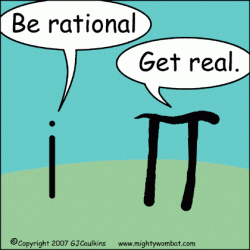Thank you to all those who helped out with our Bake Sale! We made $208, which lowers each student's cost for the San Clemente Campout by $5.80. We plan on selling Sno Cones after school this Tuesday and Thursday to bring that total even higher.
Upcoming Events:
Tuesday Sept 25 The Language of Math Vocab Quiz 2
axis of symmetry transformation translation
rotation center of rotation reflection
Thursday Sept 27 Tessellations due
Thursday Sept 27 Back to School Night 5-8pm (classroom visits from 5-6 and again at 7-8. All school meeting in Multi Purpose Room from 6-7) Parents and students invited
Tuesday Oct 2 The Language of Math Vocab Quiz 3
real numbers natural numbers whole numbers
integers rational numbers irrational numbers
Wed Oct 3 9:00am - Fri Oct 5 12 pm: San Clemente State Beach Campout
Math
Our tessellations are looking beautiful! Students will have them on display at Back to School Night on Thursday with a description of their artwork written in terms of their new math vocabulary.
 |
| Creating the design on an equilateral triangle |
 |
| Tracing the reflection |
 |
| Perfecting the design |
 |
| Checking for symmetry |
I met with each student individually to discuss their math assessments as well as concepts each student felt they needed to practice. Math groups will begin this next week. Check out http://www.tenmarks.com/ We will be using this website in class for math practice. You will hear more about it as students start using it in and out of class!
During week 4 we are investigating "real numbers" and comparing/contrasting
different number sets with an emphasis on rational and irrational numbers.
See the above events for the vocabulary connected with real numbers(Quiz 3)

According to 8th grade common core standards for math, this week students will:
Know that there are numbers that are not rational, and approximate them by rational numbers.
1. Know that numbers that are not rational are called irrational. Understand informally that every number has a decimal expansion; for rational numbers show that the decimal expansion repeats eventually, and convert a decimal expansion which repeats eventually into a rational number.
2. Use rational approximations of irrational numbers to compare the size of irrational numbers, locate them approximately on a number line diagram, and estimate the value of expressions (e.g., π2). For example, by truncating the decimal expansion of √2, show that √2 is between 1 and 2, then between 1.4 and 1.5, and explain how to continue on to get better approximations.Use properties of rational and irrational numbers.
Science
While scientists study how nature works, engineers create new things. Scientists usually perform experiments using the scientific method; whereas, engineers follow the creativity-based engineering design process.
Science
While scientists study how nature works, engineers create new things. Scientists usually perform experiments using the scientific method; whereas, engineers follow the creativity-based engineering design process.
We will be using both of these processes in our class this year. A comparison of both is below:
 |
| Table 1. Comparing the scientific method with the engineering design process.
Copyright © Megan Podlogar, ITL Program, College of Engineering, University of Colorado at Boulder.
|
In an activity that demonstrated how to use the Engineering Design Process, students were given the challenge of creating a marble track in which a marble dropped from a height of at least 12 inches and travelled at least 3 seconds before reaching the end of the track. The only materials allowed were a toilet paper roll, a manila folder, 3 index cards, scissors and a meter of tape This activity included planning, making observations, testing through trial and error and thinking outside of the box.
 |
| Building |
 |
| Testing the design |
 |
| A re-design that worked after trial and error |
 |
| Thinking outside the box. This one stayed on the track for 13 seconds! |
See you all at Back To School Night!

No comments:
Post a Comment